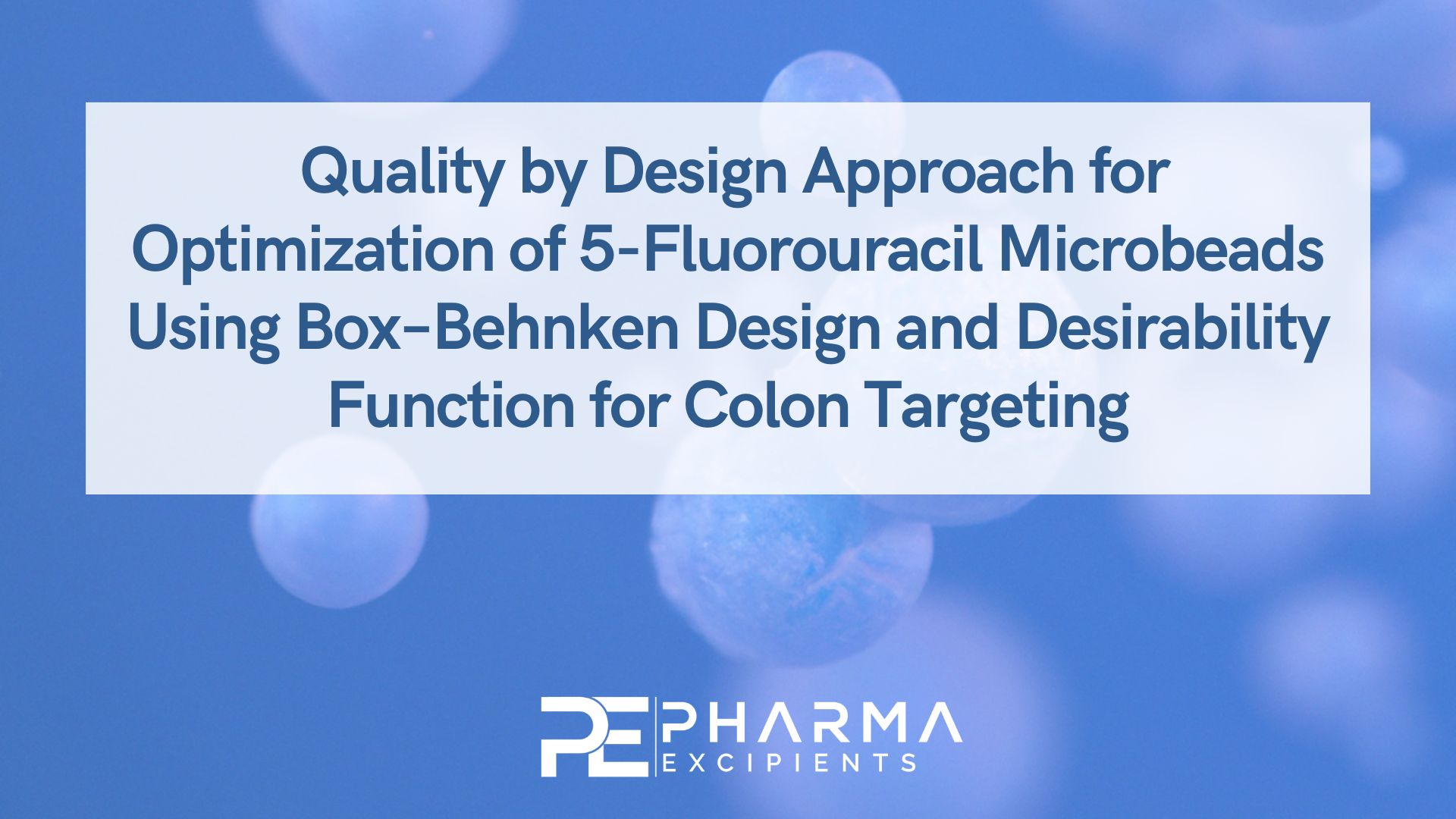Quality by Design Approach for Optimization of 5-Fluorouracil Microbeads Using Box–Behnken Design and Desirability Function for Colon Targeting

Purpose
The main objective was to develop and optimize a multiparticulate system of 5-fluorouracil through the Box–Behnken design (BBD) and desirability function and coating of the optimized batch for increased therapeutic efficacy and targeting for the treatment of colorectal cancer.
Method
It is essential to understand the factors and quality aspects involved in the formulation of a multiparticulate system through optimization. The ionotropic gel method was used to create an optimized batch, with selected independent factors such as sodium alginate, pectin concentrations, and curing time on the response variables such as particle size and entrapment efficiency of 5-fluorouracil-loaded microparticle. The relationship between the independent and dependent variables was examined by utilizing the contour, response surface designs, mathematical calculations, and desirability function produced by Design-Expert.
Result
The ionotropic gelation process was used to create an optimized batch, and the generated microparticles had a 674 µm particle size and a 90.81% drug entrapment efficiency. The observed answers were very similar with a bias of less than 5% when compared to the expected value and desirability function. A second layer of Eudragit S100 was applied to the improved formulation. The coated microbeads released pH 1.2 at a rate of less than 10%. After 10 h, more than 55.12% of the drug was released into the intestinal area (pH 6.8). The kinetics investigation demonstrated that the created formulation for the Higuchi and Korsmeyer-Peppas models possessed linearity, as shown by the plots, with R2 values of 0.9887 and 0.9236, respectively. This outcome supported the formulation’s extended-release behavior.
Conclusion
It was suggested that the drugs would be delivered to the desired place using the microbeads created in this study. The developed microbeads were probably made of small particles that contained a high percent drug entrapment. According to the findings, multiparticulate can be a possible carrier for the delivery of drugs to the colon, and the Box–Behnken design and desirability function can be an active strategy for optimizing the formulation. Its cytotoxicity is maintained by being formulated as a multiparticulate, and it is also suited for administration to patients with colorectal cancer.
Read more
Pandey, A.K., Sara, U.S. Quality by Design Approach for Optimization of 5-Fluorouracil Microbeads Using Box–Behnken Design and Desirability Function for Colon Targeting. J Pharm Innov (2023). https://doi.org/10.1007/s12247-023-09772-z

